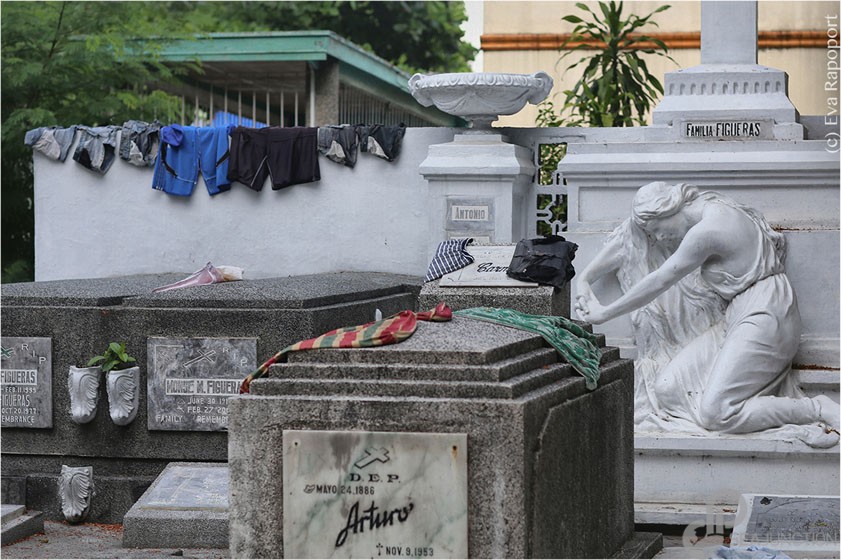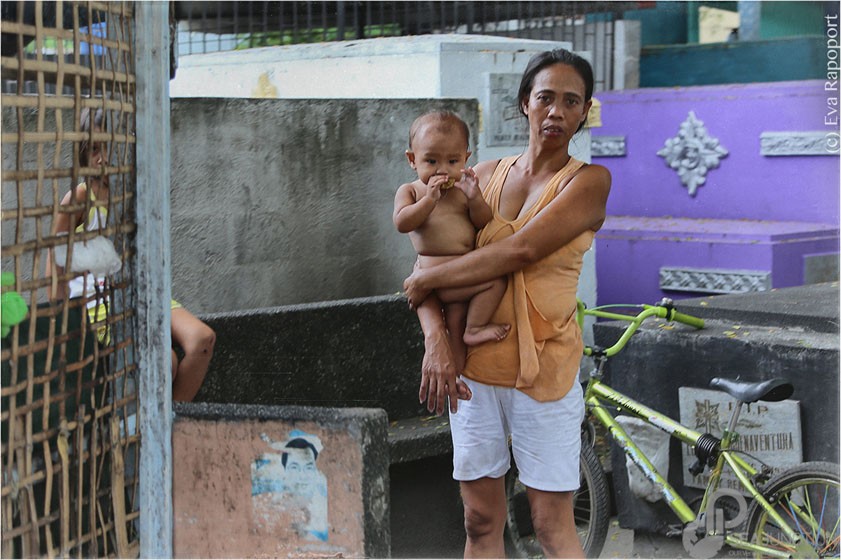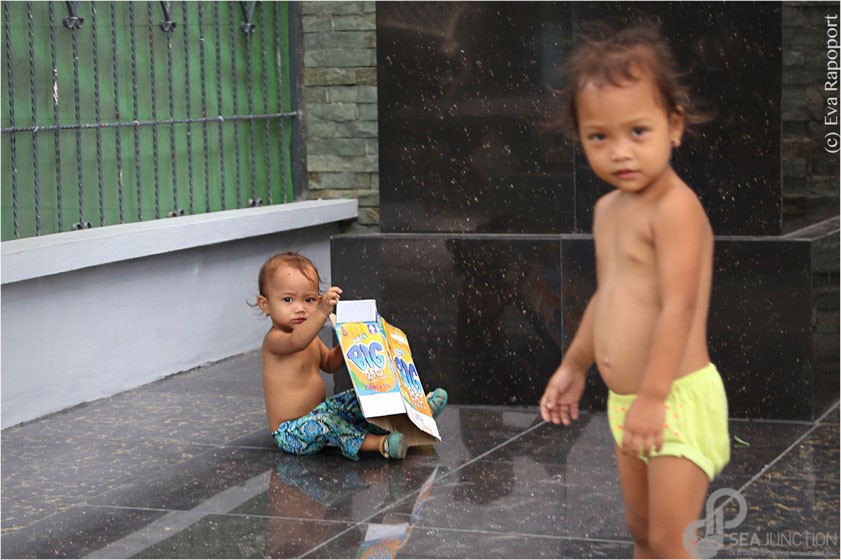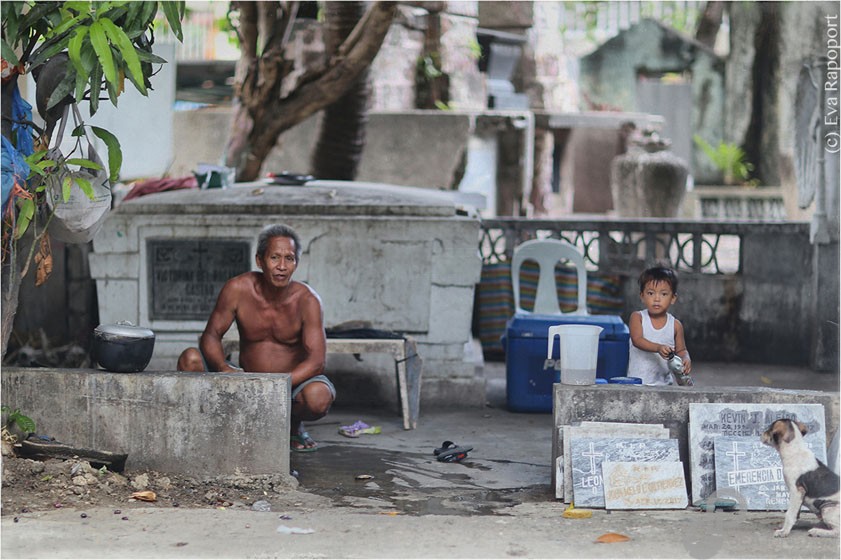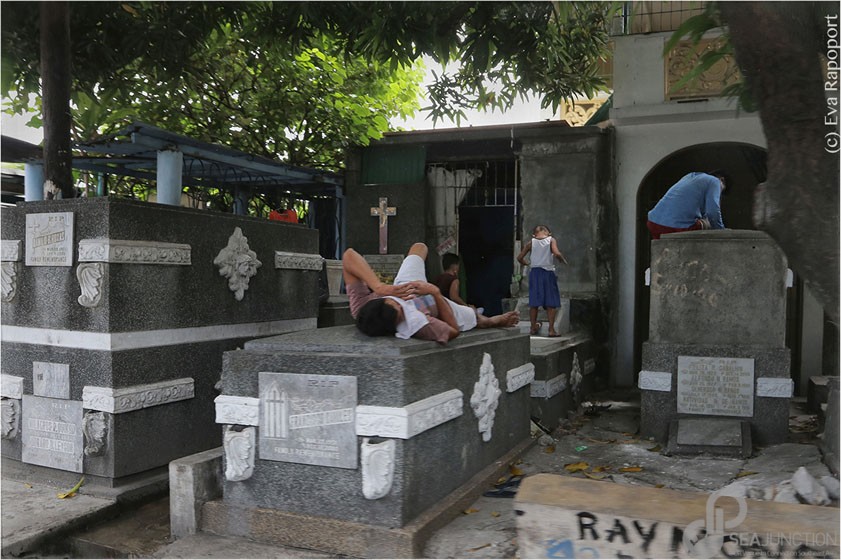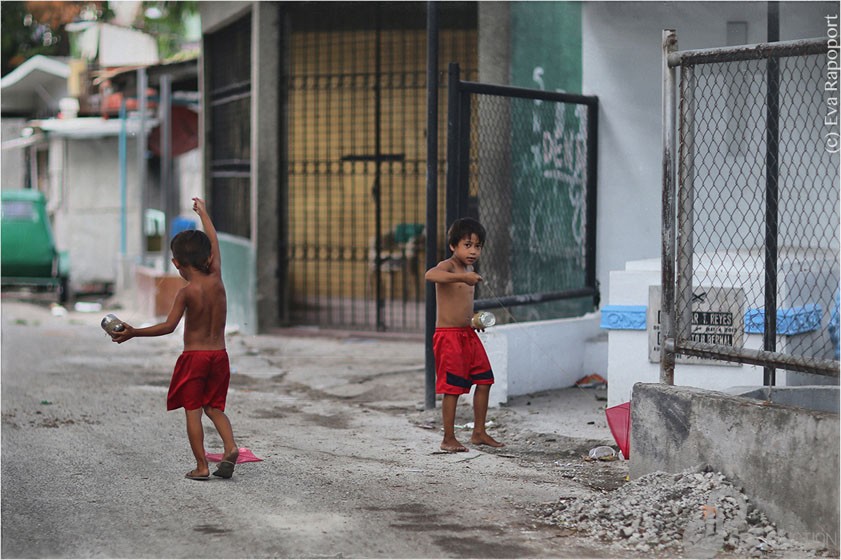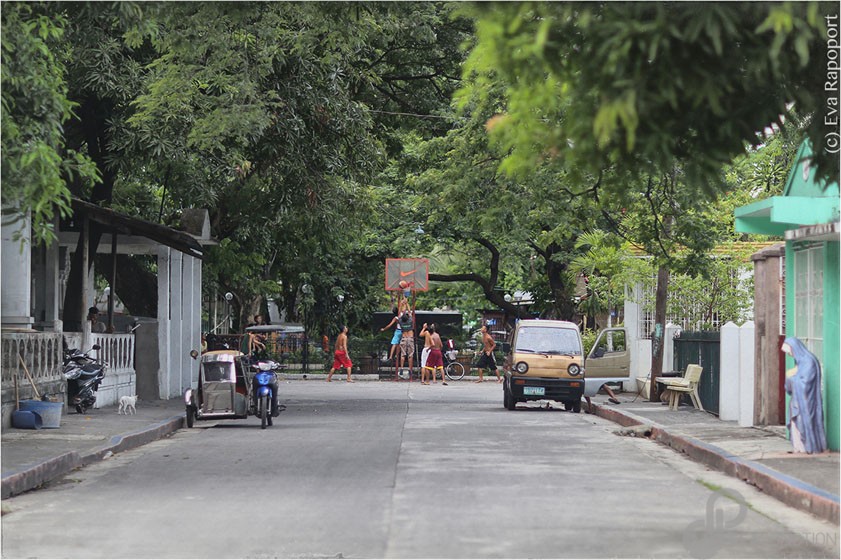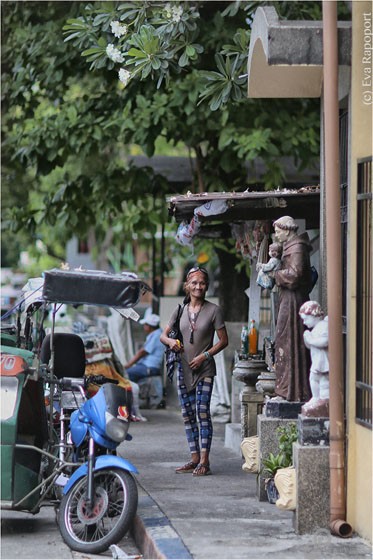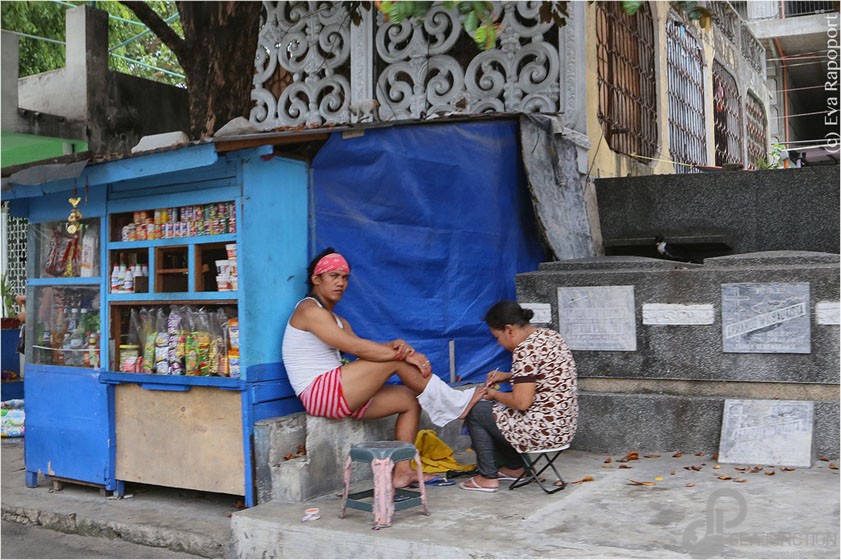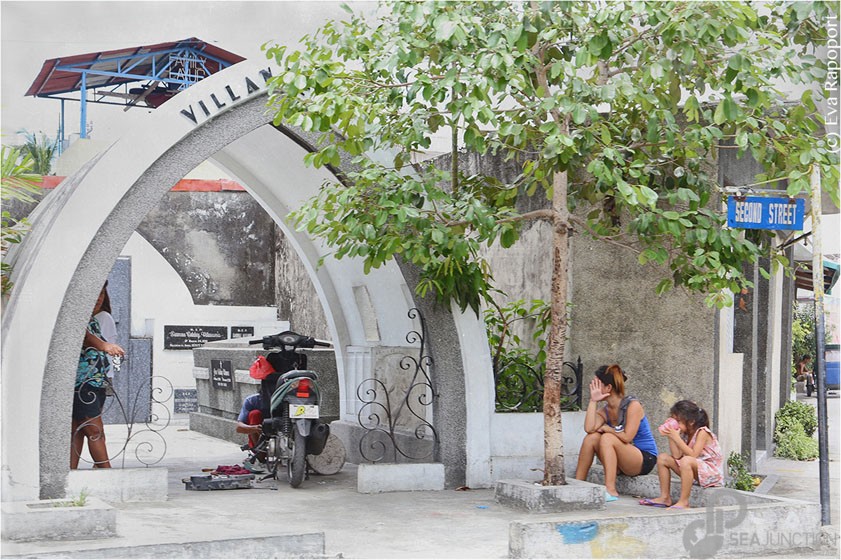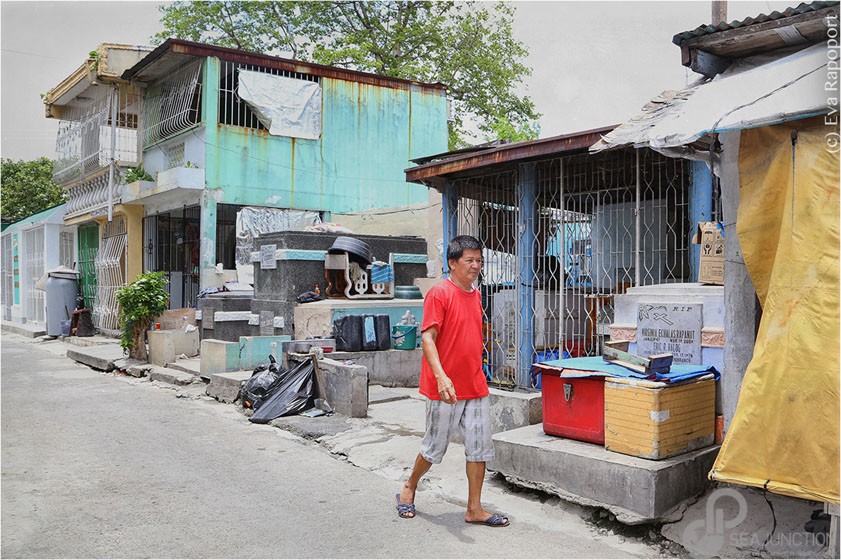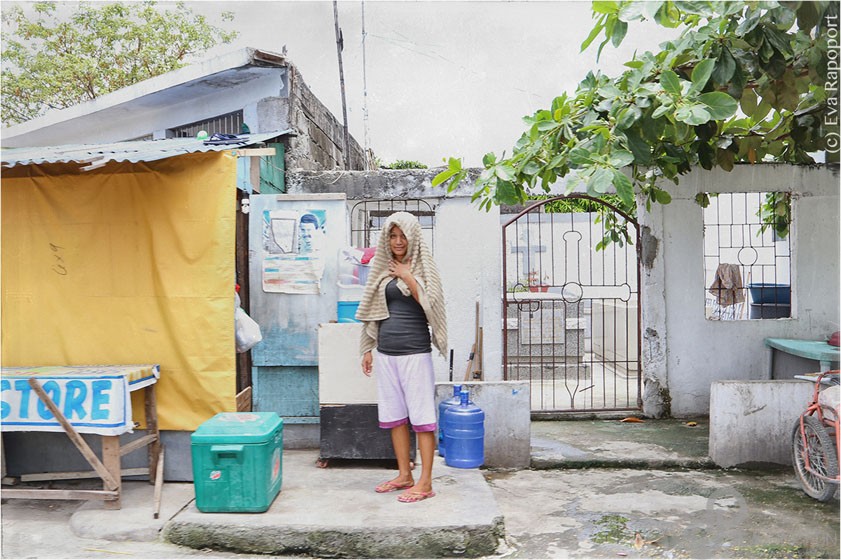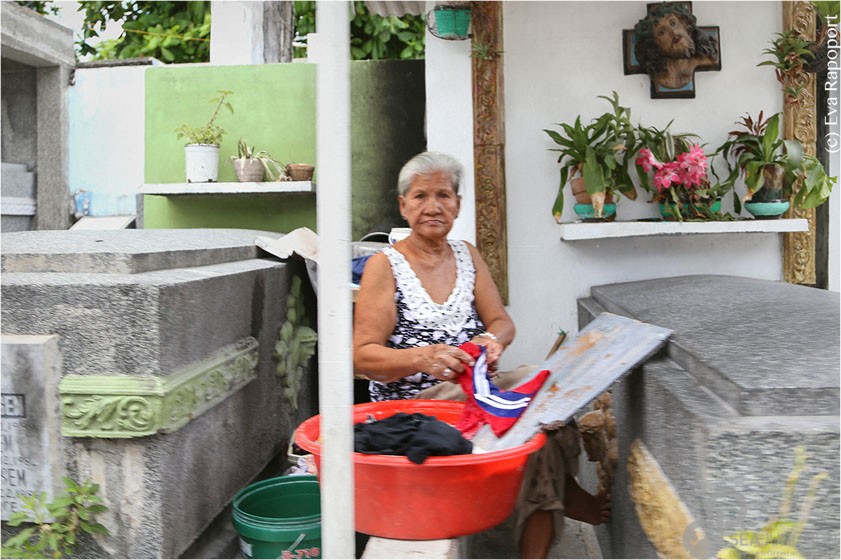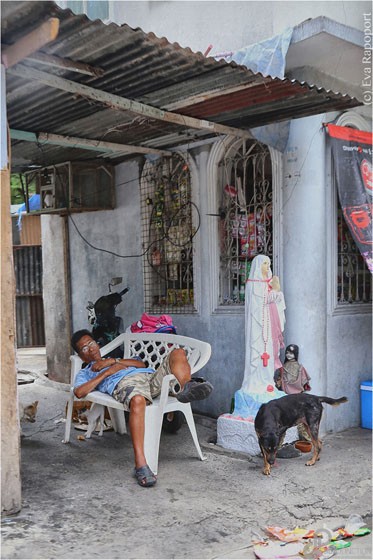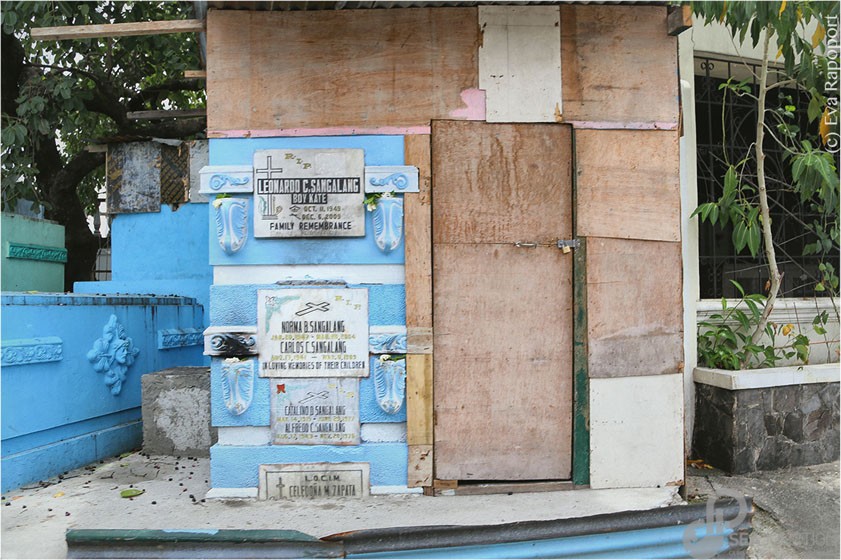Disparity in Manila North Cemetery by Eva Rapoport
Brief Description
Although most of the Asian big cities represent some peculiar patchwork of luxury and extreme poverty, probably nowhere else the opposites are so vivid and so intertwined as in Manila North Cemetery. Vast burial ground with over a hundred years of history serves as a final resting place for several Philippines’ presidents and many historical figures… but it is also a home for over 2000 living people. So, unique architecture, stone carvings and crosses, whipping angels and contemplating Madonnas are seen side-by-side with the most mundane goods and chattels: laundry dried over figured railings, mattresses, plastic bags and buckets and water basins.
Manila North Cemetery is not just a refuge for those who have nowhere else to live, it is a vibrant community with most of the social and economic activities some regular neighborhood would have: public transportation (famous Philippine ‘jeepneys’) and private motorbike taxies, numerous food stalls, beauty parlors, sports and entertainment: from basketball and gambling to billiard and internet-cafe. Kids play around the tombs, fly kites, climb trees – in a sense their leisure time seems happier and healthier than of many modern urban kids spending most of the time immersed into their electronic devices, but what kind of future they might have without a school to attend? Many of the families inhabiting lavish mausoleums actually serve as their caretakers and have to vacate the cemetery on particular holidays when the rich families come to pay annual respects to their dead; other cemetery-dwellers offer their services as informal tour guides helping anyone interested to see the most remarkable tombs and retaining oral history of the area.
Although most of the Filipinos, from taxi drivers to university professors believe in ghosts and spirits and are eager to engage in a conversation about them, the North Cemetery dwellers present a rare exception: for them dead are not a source of fear and danger but more of a reason they have at least some kind of roof over their heads and a chance to make a living.
See also:
https://www.nytimes.com/2017/06/25/world/asia/manila-north-cemetery-philippines.html
https://www.theguardian.com/world/2013/may/23/philippines-cemetery-urban-poor-home
Photographer
Eva Rapoport is a photographer, journalist and researcher currently residing in Thailand. She focuses her attention on traditional performing arts and spirit possession practices. She has exhibited at SEA on Javanese trance dance kuda kepang and these photos, part of a project about cemeteries around the world, will be exhibited in the same location next April.



